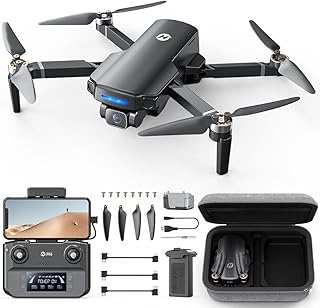Drones for Agriculture: Enhancing Productivity and Sustainability
Drones are revolutionizing the agricultural industry, offering a wide range of applications that enhance productivity and sustainability. Here's a breakdown of their impact:
Productivity Enhancement:
* Precision Farming: Drones equipped with multispectral cameras, LiDAR, and other sensors gather detailed data on crop health, soil conditions, and irrigation needs. This information enables farmers to make precise decisions about fertilizer application, irrigation scheduling, and pest control, minimizing waste and maximizing yields.
* Efficient Crop Monitoring: Regular aerial inspections using drones allow farmers to identify problems like disease outbreaks, nutrient deficiencies, or pest infestations early on. This enables timely intervention and prevents widespread damage, leading to increased yields and reduced losses.
* Automated Operations: Drones can perform various tasks autonomously, including spraying pesticides and fertilizers, seeding, and harvesting. This reduces labor costs, improves efficiency, and allows farmers to focus on other important aspects of their operations.
* Faster Data Acquisition: Drones can cover vast fields quickly, collecting data that would take days or even weeks to gather manually. This allows for timely decision-making and maximizes response time to changing conditions.
Sustainability Benefits:
* Reduced Chemical Usage: Drones equipped with precision spraying technology can apply chemicals only where needed, minimizing overuse and runoff. This reduces environmental pollution and promotes sustainable practices.
* Improved Water Management: By analyzing soil moisture data, drones can optimize irrigation schedules, leading to reduced water consumption and promoting water conservation.
* Sustainable Crop Management: Drones can monitor crop health and identify stress factors, enabling farmers to make informed decisions about resource allocation and ensuring healthy growth. This leads to reduced waste and a more sustainable approach to agriculture.
* Reduced Carbon Footprint: Drones can minimize the need for heavy machinery, reducing fuel consumption and associated greenhouse gas emissions. This promotes a more environmentally friendly approach to agriculture.
Specific Applications:
* Precision Spraying: Drones can apply pesticides, herbicides, and fertilizers with pinpoint accuracy, ensuring maximum effectiveness and minimal environmental impact.
* Crop Scouting: Drones can identify disease outbreaks, pest infestations, and other crop health issues, allowing for early intervention and minimizing potential damage.
* Soil Mapping: Drones can create detailed soil maps, providing insights into soil fertility, nutrient levels, and water retention, allowing farmers to optimize fertilizer and irrigation strategies.
* Livestock Management: Drones can monitor livestock herds, identify sick or injured animals, and help farmers manage grazing patterns for optimal pasture utilization.
Challenges and Considerations:
* Regulation and Safety: Drone use in agriculture is still subject to regulations and safety concerns. It's important to adhere to all applicable laws and operate drones responsibly.
* Infrastructure and Training: Investing in appropriate infrastructure, training, and technical support is crucial for effective drone implementation.
* Cost and Access: While drone technology is becoming more affordable, initial investment costs can be a barrier for some farmers. Furthermore, access to reliable internet connectivity is essential for data processing and analysis.
Future Prospects:
* Artificial Intelligence Integration: Integrating AI and machine learning will enable drones to perform more complex tasks autonomously, further increasing efficiency and productivity.
* Advanced Sensor Technology: The development of more advanced sensors will provide even greater insights into crop health, soil conditions, and environmental factors.
* Drone Swarms: The use of multiple drones working in coordination will allow for large-scale coverage and faster data acquisition.
Conclusion:
Drones are transforming the agricultural landscape, enabling farmers to enhance productivity and sustainability. By embracing drone technology, farmers can optimize resource utilization, minimize environmental impact, and ensure a more sustainable future for agriculture. As drone technology continues to evolve, its impact on the industry will only grow stronger, contributing to a more efficient, resilient, and environmentally conscious food production system.


